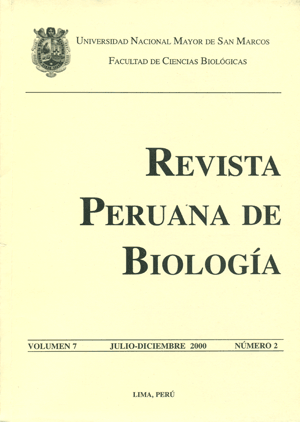Experimental culture of Octopus mimus, Gould 1852 in Perú.
DOI:
https://doi.org/10.15381/rpb.v7i2.6818Keywords:
Octopus, culture, growth, reproduction, paralarvae.Abstract
Octopus mimus Gould, 1852 is an important benthic resource in the Peruvian artisanal fishery and is always in demand on the international market. Bibliographic antecedents about the culture of this species for Southeastern Pacific are few. The present study was made in the Center of Aquaculture "La Arena", Casma, Peru. The experiments were carried out in fiber glass tanks and long-line in the sea. Feeding was made with fish, crustaceans and mollusk and also was tested with wet pellets ("piensos humedos"), the last one being accepted after an starvation period. For copulation the biggest specimens were chosen (1,5 kg). Differences were observed in growth for those reared in the pools (185 and 369 g/month), the growth rate was greater than that of those in the lines of culture (120,6 g/month). The maximum paralarvae survival was 17 days to temperatures of 21 to 22 oC; they were fed with nauplios of brine shrimp.Downloads
Downloads
Published
Issue
Section
License
Copyright (c) 2000 Paul Baltazar, Pilar Rodríguez, William Rivera, Violeta Valdivieso

This work is licensed under a Creative Commons Attribution-NonCommercial-ShareAlike 4.0 International License.
AUTHORS RETAIN THEIR RIGHTS:
a. Authors retain their trade mark rights and patent, and also on any process or procedure described in the article.
b. Authors retain their right to share, copy, distribute, perform and publicly communicate their article (eg, to place their article in an institutional repository or publish it in a book), with an acknowledgment of its initial publication in the Revista Peruana de Biologia.
c. Authors retain theirs right to make a subsequent publication of their work, to use the article or any part thereof (eg a compilation of his papers, lecture notes, thesis, or a book), always indicating its initial publication in the Revista Peruana de Biologia (the originator of the work, journal, volume, number and date).






